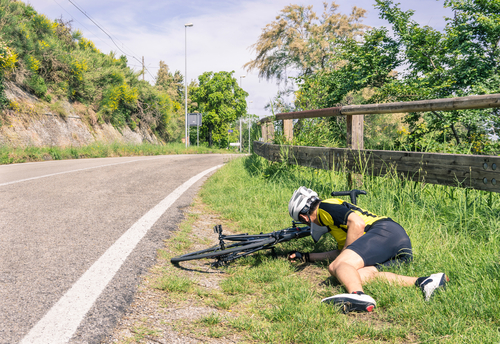Bicycle accidents can cause life-altering injuries, and in many cases, they happen because another person failed to act responsibly on the road. If someone’s carelessness caused your bicycle crash and injuries, you can initiate a lawsuit or seek an insurance claim for compensation. This process often involves gathering evidence, identifying the correct liable party, and understanding which laws apply in your jurisdiction. Working with a bicycle accident lawyer is key to building a robust case.
Key Takeaways
- You can sue for a bicycle accident if you can prove the other party’s negligence caused your injuries.
- Liability can involve drivers, employers, government agencies, or other responsible parties.
- Strong evidence and quick legal action improve your chances of success.
- Work with a bicycle accident lawyer, who mostly works on a contingency fee arrangement, to enhance the chances of a successful legal action.
Legal Grounds for Suing After a Bicycle Accident
Most bicycle accident lawsuits are based on negligence. This means showing that the at-fault party did not act with reasonable care, causing your injuries. To succeed, you typically must establish four key elements, which basically form the backbone of most bicycle accident claims. Failing to prove even one of them can jeopardize your case, which is why strong evidence is important. These elements include the following:
Duty of Care
Every driver, property owner, or entity that interacts with cyclists has a legal obligation to act in a reasonably safe manner. For drivers, this includes following traffic laws, staying alert, and sharing the road responsibly. For municipalities, it means keeping bike lanes and roads safe for travel.
Breach of Duty
Breach of duty in bicycle accidents refers to a situation where a person fails to act in a way that a reasonable person would in a similar situation, leading to an accident. You must show that the other party violated this duty. Examples include running a red light or a truck driver making an illegal turn. The breach can be an act of commission, such as speeding, or omission, such as failing to signal.
Causation
There must be a direct link between the breach of duty and your accident. This means proving that your injuries wouldn’t have happened if the defendant had acted responsibly. For instance, if a distracted driver veered into the bike lane and struck you, their distraction is the cause of your harm.
Damages
Finally, you need to prove actual losses resulting from the accident. These may include medical expenses, lost income, property damage (like your bicycle), pain and suffering, or long-term disability. Without demonstrable damages, you can’t recover compensation, even if the other party was negligent.
Establishing Liability in a Bicycle Accident Lawsuit
Once you understand the elements of negligence, the next step is ascertaining who can be held accountable for the accident and the resulting losses. Liability depends on the facts of the accident and the role each party played in causing it. Common scenarios in bike accident claims include:
Suing a Private Driver
If a motorist’s negligent driving caused your accident, you can launch a claim against their insurance company or sue them directly. Negligence regarding a private driver includes:
- Failing to yield
- Speeding
- Drifting into a bike lane
- Drug-impaired driving
 In such cases, you will need to present evidence, such as dashcam footage, eyewitness statements, and police/crash reports, which can be key in proving fault.
In such cases, you will need to present evidence, such as dashcam footage, eyewitness statements, and police/crash reports, which can be key in proving fault.
Suing a Company or Commercial Vehicle Operator
When a commercial driver, such as a delivery truck operator or rideshare driver, is at fault, the company employing them may share liability. Under vicarious liability laws, employers may find themselves responsible for the negligence of their staff acting within the scope of their job. Commercial defendants often have higher insurance coverage, which can increase potential compensation.
Suing a Municipality or Public Transit Operator
If your accident resulted from dangerous road conditions, defective bike lanes, or negligent operation of a city bus or public transit vehicle, the municipality or transit authority may be liable. These cases are more complex because they involve special procedural rules and shorter deadlines for filing claims, mostly called “notice of claim” requirements.
Suing Other Potentially Liable Parties
In some cases, liability extends beyond drivers or government entities. Examples include:
- Construction companies that leave debris or hazards in the roadway without proper warnings.
- Bicycle or parts manufacturers, if a mechanical defect contributed to the crash.
- Property owners whose unsafe driveways, parking areas, or access points create dangerous conditions for cyclists.
Properly identifying all responsible parties is crucial because it can expand the sources of compensation available and prevent you from missing a liable defendant.
Work With a Bicycle Accident Injury Lawyer
 Bicycle accident cases can be deceptively challenging. As opposed to just telling your side of the story, proving negligence requires a detailed investigation, compelling evidence, and a winning legal strategy. A bicycle accident attorney will help identify all liable parties and sue them so you’re not leaving potential compensation on the table. If you’ve suffered an injury in a bicycle accident, early legal action can influence your outcome. Engage your lawyer immediately to clarify your legal position on pursuing compensation through a lawsuit.
Bicycle accident cases can be deceptively challenging. As opposed to just telling your side of the story, proving negligence requires a detailed investigation, compelling evidence, and a winning legal strategy. A bicycle accident attorney will help identify all liable parties and sue them so you’re not leaving potential compensation on the table. If you’ve suffered an injury in a bicycle accident, early legal action can influence your outcome. Engage your lawyer immediately to clarify your legal position on pursuing compensation through a lawsuit.
Frequently Asked Questions
How long do I have to file a lawsuit?
The deadline to file a lawsuit or statute of limitations is different in every state. For bicycle accidents, it’s usually one to three years from the date of the crash. If you’re suing a government agency, the deadline can be much shorter, and you may have to give formal notice before filing. Missing this deadline usually means losing your right to compensation, so acting quickly is important.
Can I initiate a lawsuit if the at-fault driver has no insurance?
If the party that hit you is uninsured, you have a few options. You can bring a claim directly under your own uninsured coverage if it’s included in your auto or cycling-specific insurance policy. You can also sue the driver directly, or sue other parties such as a driver’s employer, so long as they have the resources to pay a claim.
How much does it cost to hire a bicycle accident lawyer?
Most bicycle accident lawyers work on a “no win, no fee” basis. This means you don’t have to pay any fees up front. Instead, the lawyer’s payment is a percentage of your settlement or court award. If your lawyer doesn’t win, you normally owe nothing for their services, though you may still be responsible for certain case costs, such as expert witness fees or filing charges. This arrangement makes a bike accident attorney accessible to injured cyclists without financial risk.
